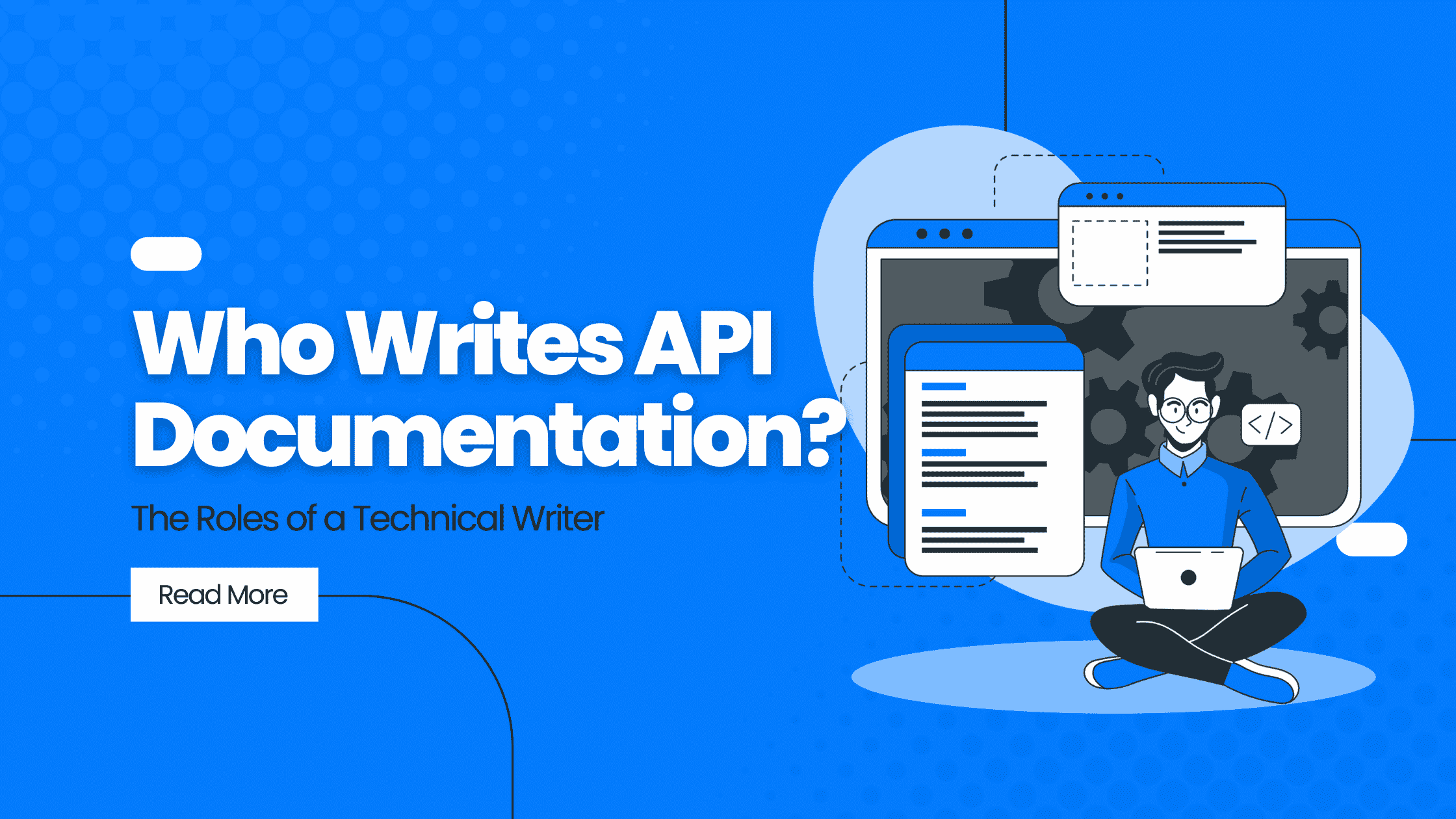At some point, every developer has to come to grips with the API documentation. It’s one of those things that’s both essential and often neglected.
A good API can significantly affect how easily others use your code. But writing clear and concise API docs can be challenging, even for experienced developers.
One question often arises: who should be responsible for writing API docs? Is it the developers’ job who create the code, or should there be a dedicated team of writers?
In this post, we’ll explore the different aspects of API documentation and the roles of the people involved in creating it. We’ll also look at some tips for writing good API documentation. Let’s get started!

Who Writes API Documentation?
Technical API writers
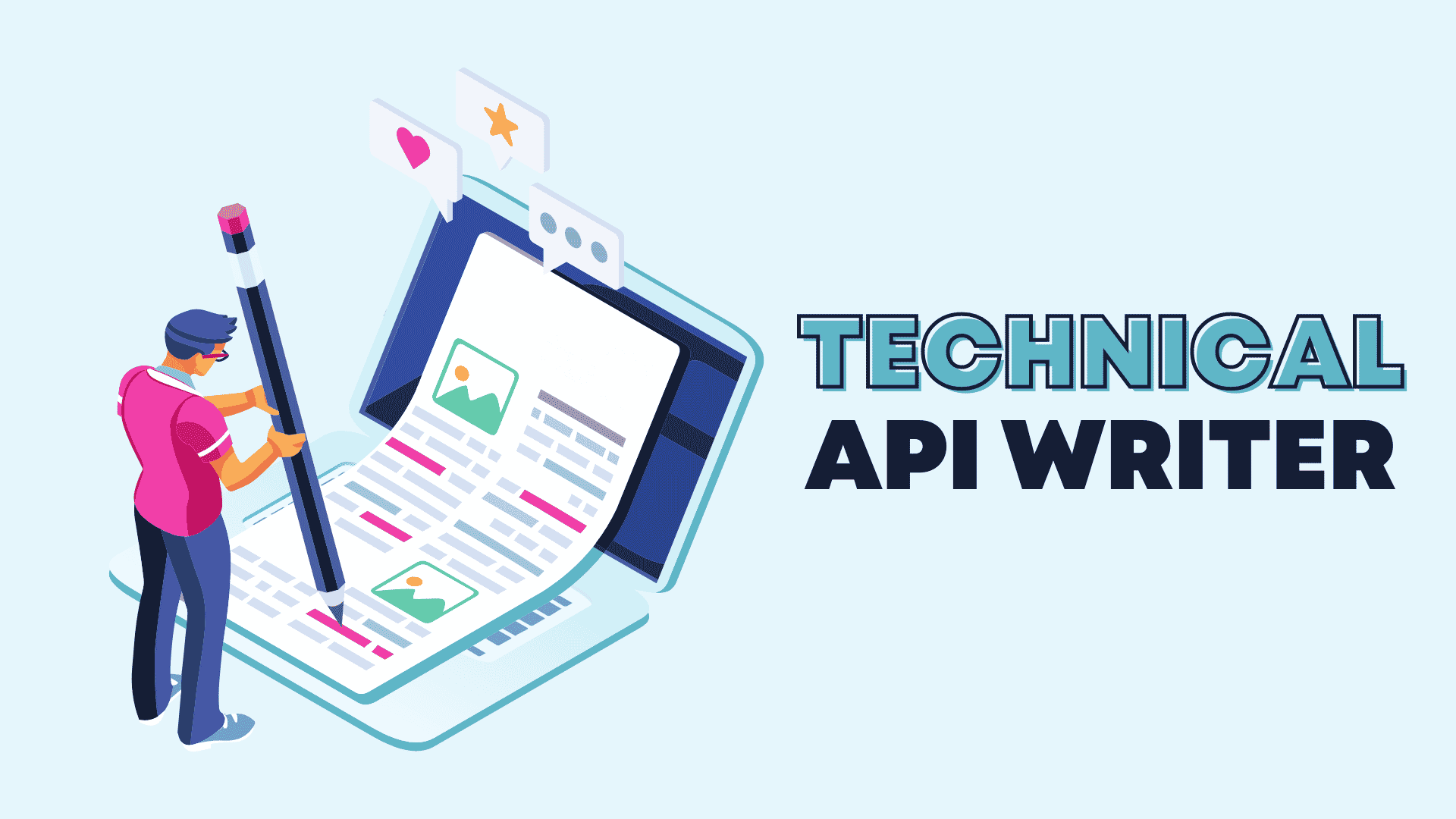
Technical API writers are a key part of any thriving API strategy. They take the time to understand how the API works and what it can do. A technical API writer is a professional who creates documentation that makes it easy for others to know how to use an application programming interface (API).
To do this, they work closely with developers and other key stakeholders to gather information about the API and then write clear and concise documentation that explains how the API works. Technical API writers with programming experience can often create the most user-friendly documentation because they understand how the code works.
This includes providing code examples, explaining how to authenticate requests, and describing common error conditions. The Technical Writer must be able to read and understand code, as well as have the ability to communicate with developers effectively.
What is API Documentation for Technical Writers?
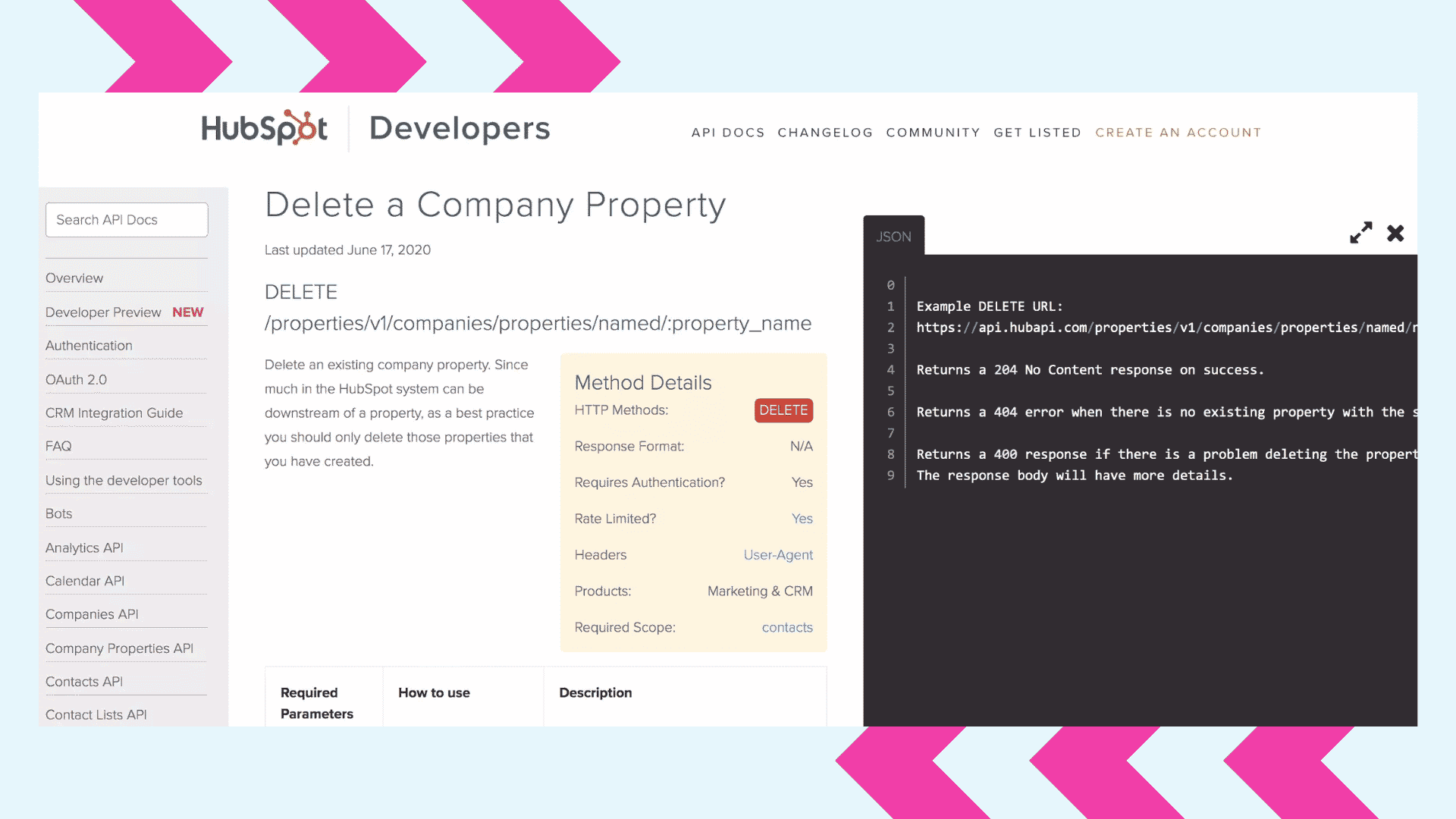
API documentation is an instruction manual that explains how to use an API and its services. It is a key part of a developer’s toolkit since it can help them learn how to use an API and its endpoints.
It is a technical document that provides information about using a software library or framework. Programmers often use it as a reference when working with the API.
While some programmer-oriented documentation may be informal and focus primarily on code examples, other developer documentation may be more formal and include detailed descriptions of classes, methods, and parameters.
API documentation typically includes detailed information about error handling and troubleshooting.
Why Document APIs?

One of the most important aspects of software development is document APIs. Good API documentation can help ensure that your API is used consistently and correctly by providing a reference point for developers integrating your API into their applications. Documenting your APIs can save you a lot of time and effort in the long run.
By document, we mean any text-based file such as a word processing document, a spreadsheet, or even a text file. The purpose of document APIs is to allow different programs to share data in a well-defined way.
This is important because it allows different programs to work together seamlessly and use each other’s features. For example, if you are using a word processor to write a letter, you might want to be able to insert the address from your contacts list into the letter.
To do this, the word processor would need to know how to access the data in your contacts list. This is where document APIs come in. The word processor would use the Document API to access the data in your contacts list and then insert it into the letter.
Similarly, if you were using a spreadsheet program to track your finances, you might want to be able to insert charts and graphs into a report about your income and expenses. To do this, the spreadsheet program would need to know how to access the data in your financial records.
Again, this is where document APIs come in. The spreadsheet program would use the Document API to access the data in your financial records and then insert it into the report. In summary, document APIs are essential because they allow different programs to share data in a well-defined way. This makes it possible for various programs to work together seamlessly and use each other’s features.
As the saying goes, “a picture is worth a thousand words.” The same can be said for API documentation. A well-documented API can save developers hours of time and frustration by clearly explaining how the API works and providing code samples to illustrate typical use cases.
How can we create Documentation for APIs?
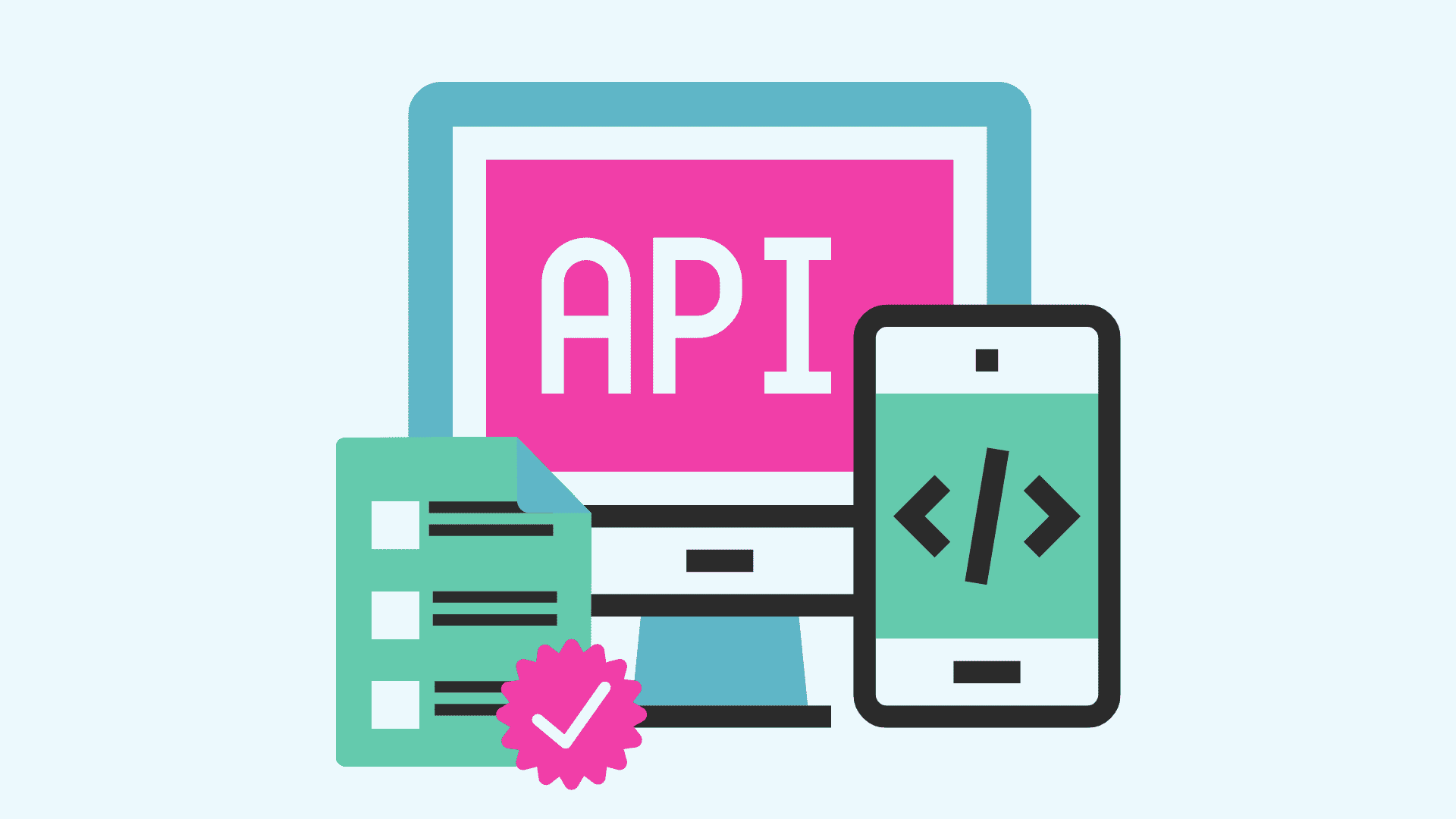
As any developer knows, APIs are vital to modern software development. By providing a way for different pieces of software to communicate with each other, APIs make it possible to create complex applications that would otherwise be impossible.
However, creating a well-documented API can be a challenge. In addition to providing clear and concise documentation for each endpoint, you must track changes and updates over time.
One way to approach this is to use a dedicated API documentation tool. These tools can help you quickly generate comprehensive documentation for your APIs and track changes and updates.
This can be a valuable time-saver, particularly if you have a large or complex API. Another approach is to use comments within your code to document your APIs. While this requires more upfront work, it can be helpful if you want others to be able to understand your code quickly.
Whichever approach you choose, taking the time to document your APIs can save you a lot of time and headaches in the long run.
How to Write Useful API Documentation
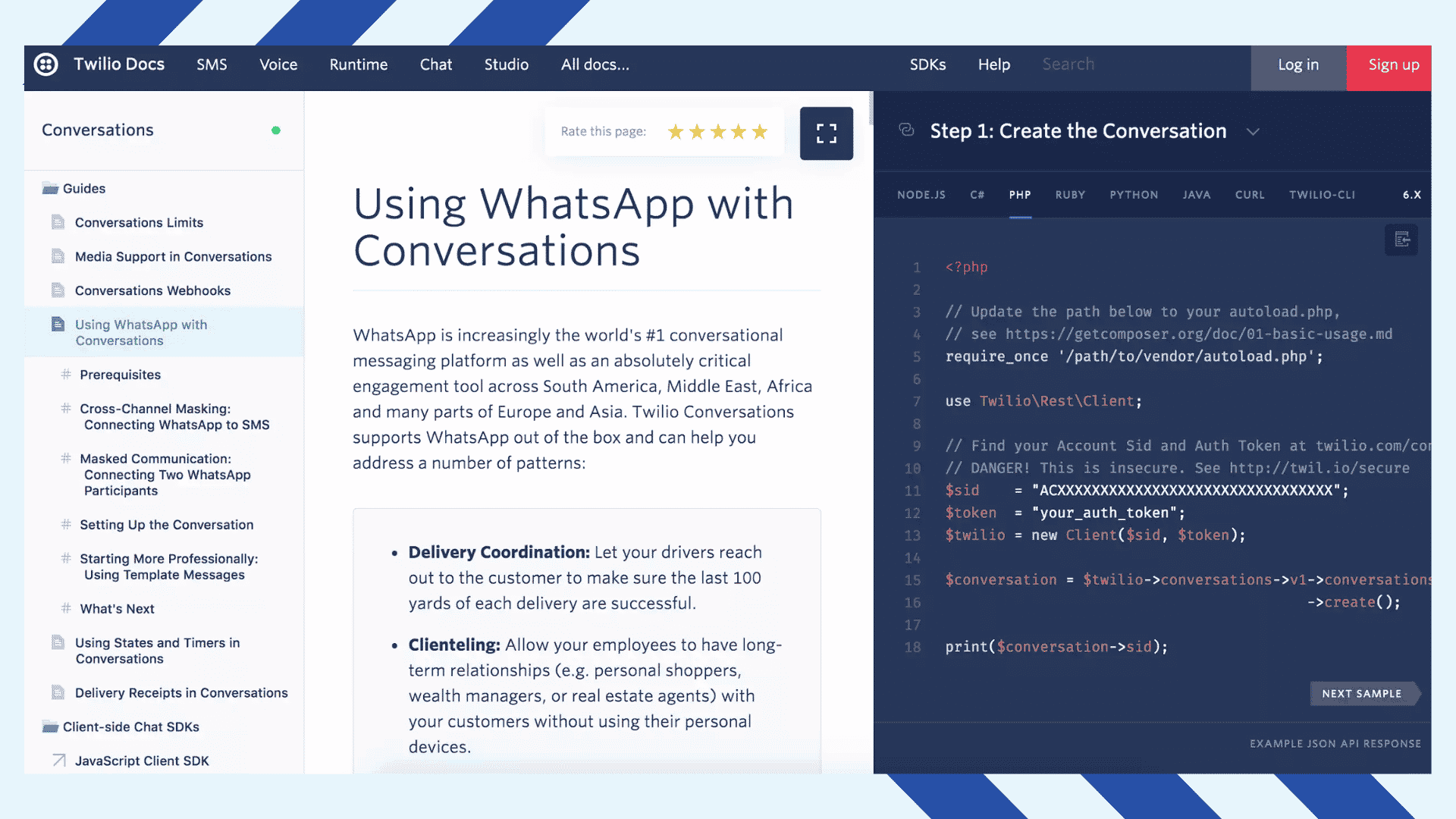
Know your audience
Before you start writing, it’s important to understand who will use your API documentation and what they need to know. Will your docs be used primarily by experienced developers who need a quick reference, or will they be used by beginners who need more step-by-step instructions?
After all, the point of documentation is to help people use your API. Writing clear and helpful documentation won’t be easy if you don’t know who will use your API. There are a few different types of users that you should keep in mind when writing API documentation:
- Developers who will be using your API to build applications: These users will need detailed information about how your API works and how they can access its features.
- End users will be using the applications built with your API: These users will need clear and concise documentation explaining how to use the application features.
- Administrators are responsible for managing applications built with your API: These users will need documentation explaining how to configure and manage the applications.
Knowing your audience is essential to writing helpful API documentation. By keeping these different types of users in mind, you can ensure that your documentation meets all its readers’ needs.
Keep it organized
It is important to keep the information well organized when creating API documentation. This can be done by using headings and subheadings to break up the text and using tables, images, and videos as needed. All information included in the API docs should be relevant and valuable to potential users.
Use clear and concise language
API documentation should be written in clear and concise language. It should be accessible to everyone, regardless of their expertise or familiarity with the subject matter.
When writing about complex topics, use simple language to make it easier for readers to understand. Avoid terms that require familiarity, and never assume that readers know everything.
Use gender-neutral terms when possible, and add alternate text to images, so they are accessible for everyone. Use graphics and images to help illustrate your points, and provide captions for screen readers and other accessibility tools.
Include examples
It is important to include examples in your API documentation to make it easy for developers to get started.
Example apps can help inspire developers and make it easier for them to use your API. The ideal example app has the lowest possible barrier to getting something working.
Include examples of the types of data that your API can return, how you would use your API to accomplish a task, and example requests and responses that illustrate how to use your API.
Be responsive to feedback
It’s important to be responsive to feedback to keep your customers happy. You should also remove any deprecated data from your docs regularly.
You can use analytics to help improve your docs by monitoring which API calls are being made and for what purpose.
This will allow you to create more targeted and useful information for your users. It is also important to ensure that your documentation is always up-to-date to reflect the latest changes in your API.
What to Include in API Documentation
Overview

Your API docs should start with a clear overview of what the API does and how it works. This overview should be brief but informative and provide enough context so that readers can understand the rest of the documentation.
It should include an overview of the API functionality, links to reference documentation for the operations, and a Getting Started section that illustrates key information and steps for using the API.
After the overview, each API endpoint should be documented in detail, including information on the parameters that can be used and the responses that will be returned. Any edge cases or error conditions should also be noted.
Tutorials
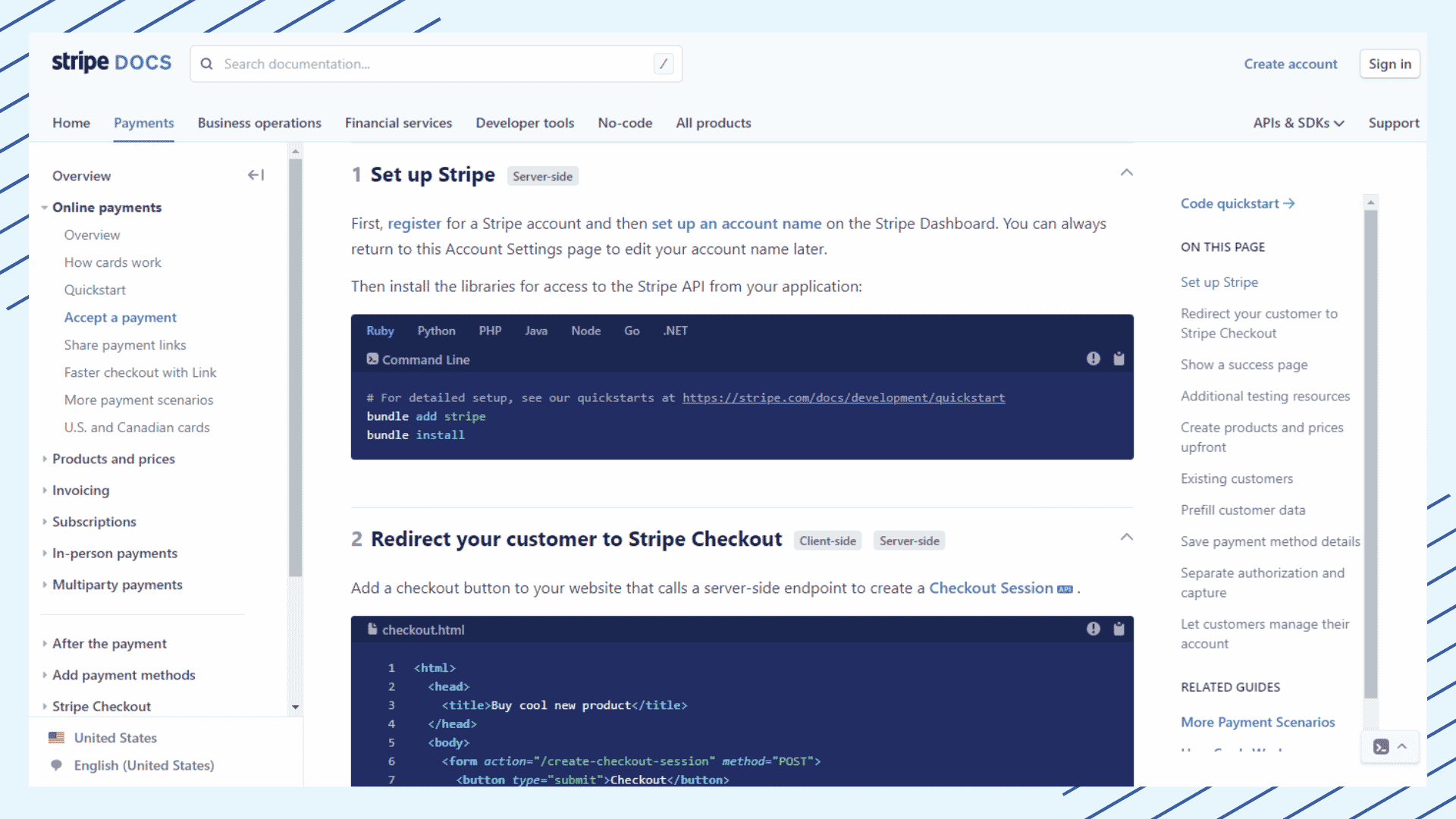
API documentation for tutorials should include clear and concise instructions on using specific function calls and parameters to accomplish a task. Tutorials should be well-formed and easy to read to be helpful to readers.
Tutorials are often used in API documentation to provide step-by-step guides for using the API. Tutorials can be helpful for users who are new to the API or who need more detailed instructions on how to use specific function calls and parameters.
Examples
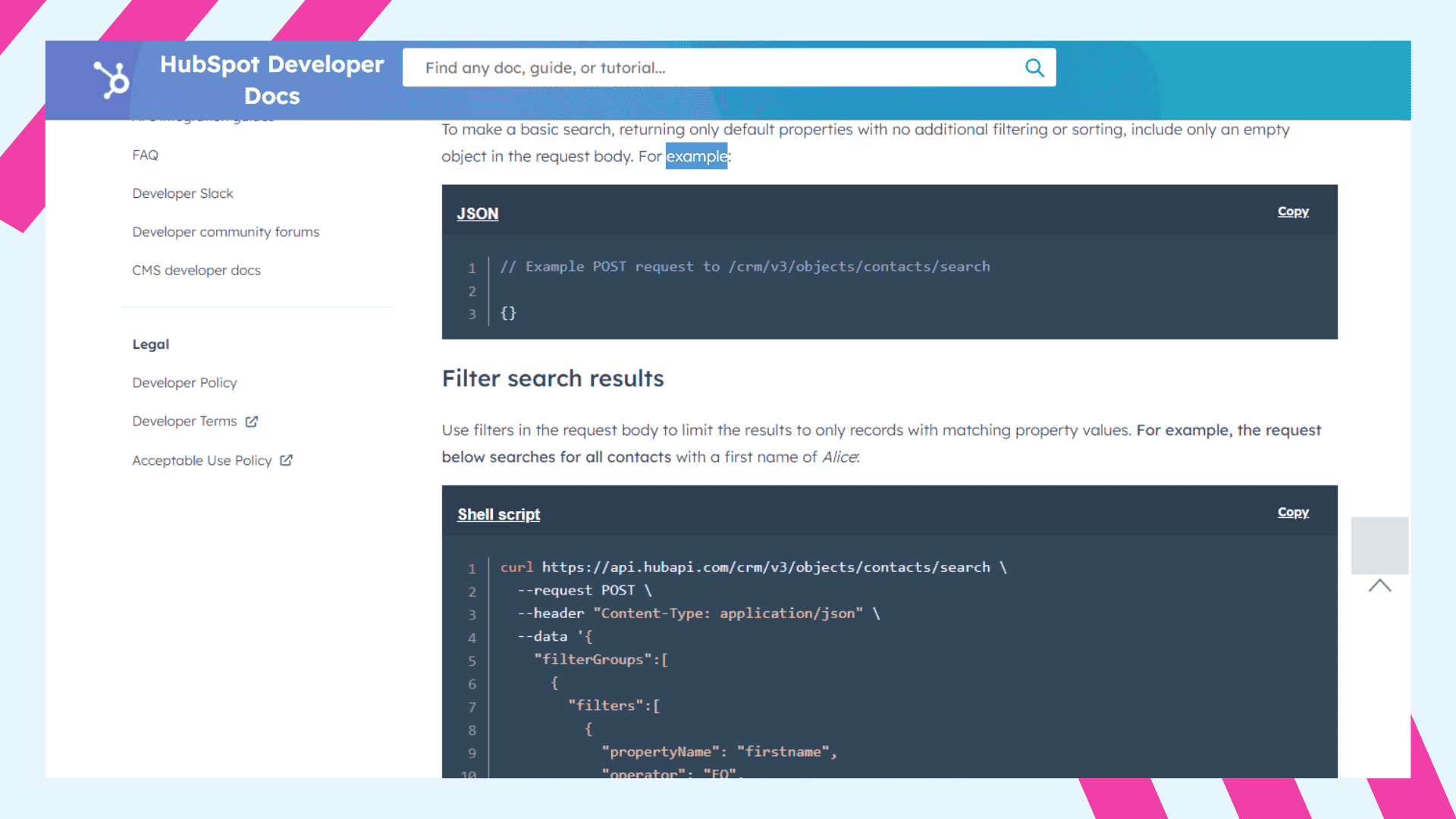
Your API documentation should include at least one example app to illustrate advanced use cases. You can share use cases that are already popular or share examples that take inspiration from existing developers. Either way, make sure your code is well-formed and easy to read.
Glossary
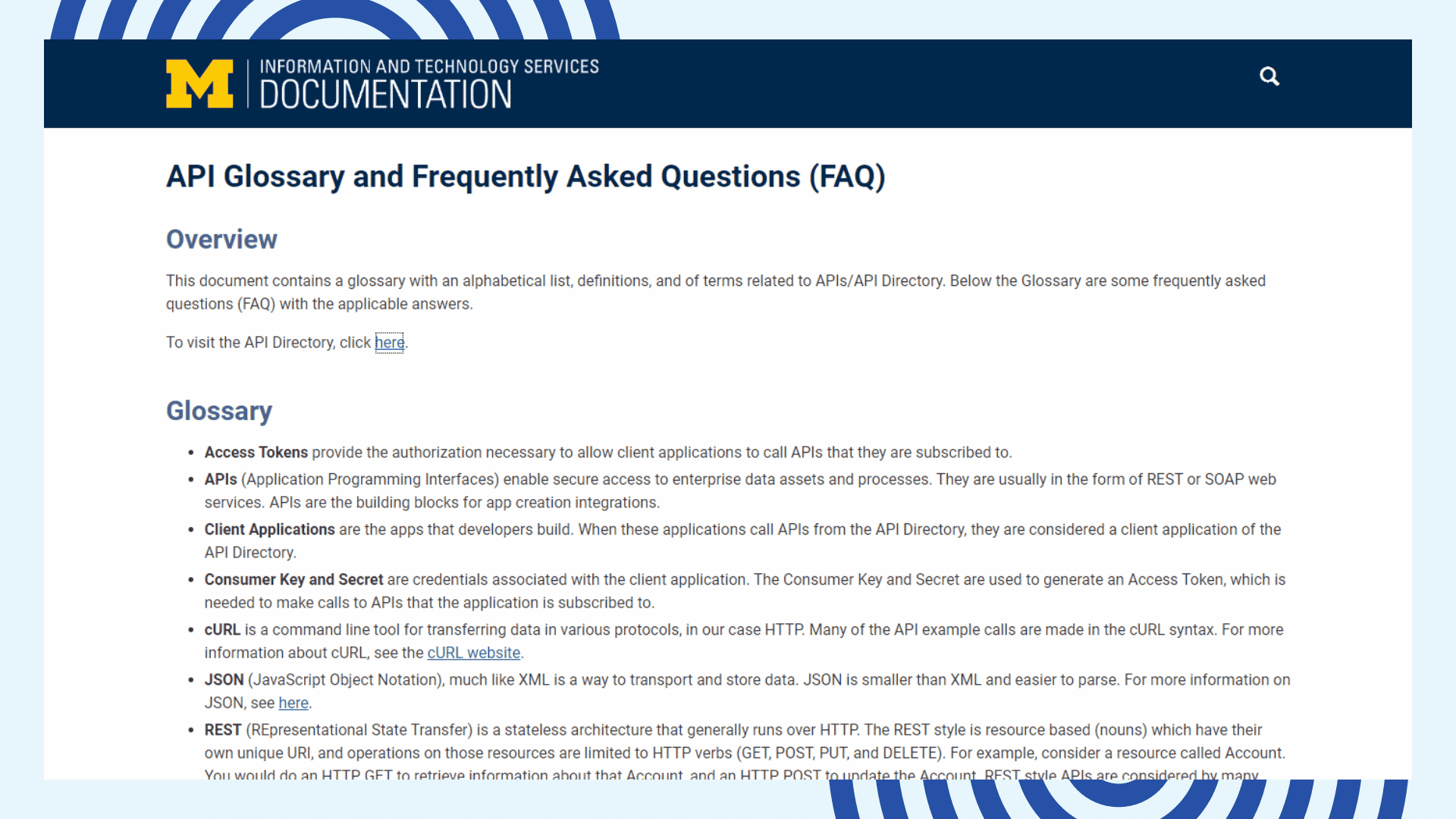
While glossaries are not required for every API, they can be extremely helpful for developers who are new to a particular API or need a refresher on the terminology used.
A glossary page can also be a valuable resource for developers working with an API for the first time. Including a glossary in your API documentation can provide a valuable resource for developers that will help them better understand the API and how it works.
When creating a glossary for your API, choosing terms that are likely to be unfamiliar to developers is important. You should avoid technical jargon and focus on terms relevant to the API’s functionality. It would be best if you also strived to keep the glossary concise and clutter-free.
The Different Types of API Documentation
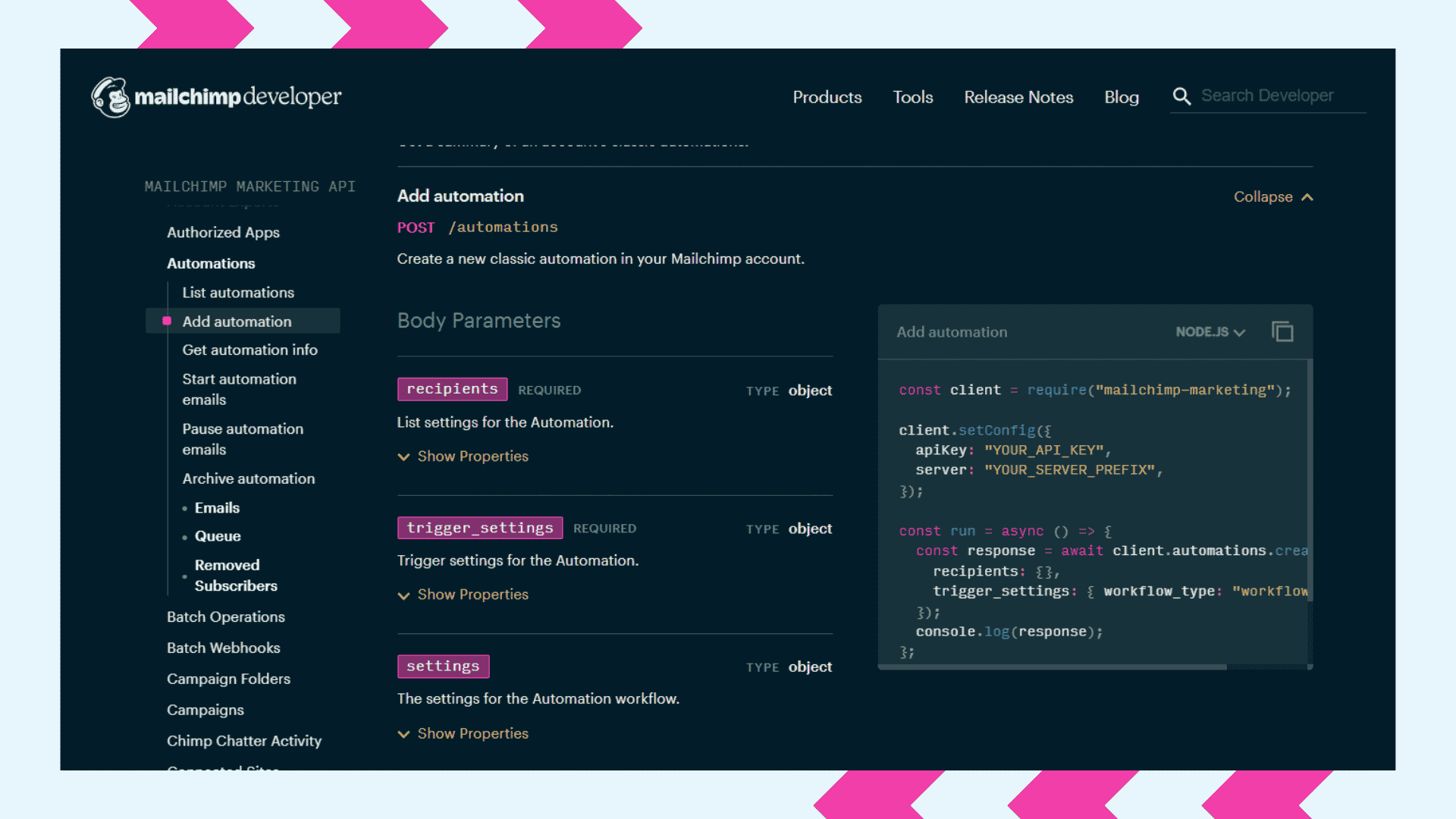
When it comes to writing API documentation, there is no one-size-fits-all solution. The type of documentation you write will depend on your audience, the platform you’re using, and the specific features of your API. Here are four common types of API documentation:
Reference documentation
A reference API is a document that provides information about the functions and methods in an application programming interface (API).
It is important for developers as it can help them understand how to use the API. Reference documentation can be found in API reference guides and other materials.
These technical documents describe your API’s details, including its methods, parameters, and return values. Reference docs are typically geared towards developers already familiar with your API’s basics.
How-to guides
How-to guides are a specific type of API documentation that provide step-by-step instructions for completing a task. These guides can be used to learn how to use an API or to reference how to complete a specific action quickly.
How-to guides are typically written in a concise and easy-to-follow style, with each step numbered. In some cases, screenshots or code snippets may also be included. How-to guides can be beneficial when an API has complex or specialized functionality.
By following the steps outlined in a how-to guide, users can be sure they complete the task correctly and efficiently. It can save both developers and end users time and frustration.
Use cases
Use cases are stories that demonstrate how real developers are using your API to build apps or solve problems. They can be tremendously helpful in showing potential users what’s possible with your API.
Error message
If your API includes error messages, it’s important to document them, so developers know what they mean and how to resolve them. Error messages should be clear, concise, and relevant to the problem.
How do I become an API writer?

Before becoming an API writer, you must understand what an API is and how it works. API documentation is a vital part of any software development project. A well-written API can distinguish between a successful launch and a costly failure. So, how does one become an API writer?
While there is no single path to success, there are a few critical skills that all API writers should possess. First and foremost, API writers must be excellent communicators. They need to be able to explain complex concepts in simple language clearly.
Secondly, API writers must have a solid technical background. They should know how software can be integrated and understand how APIs work.
API writers must be able to generate high-quality documentation quickly and efficiently. They should have experience using different tools and strategies for creating clear and concise docs.
To become an API writer, you also must have excellent programming and writing skills. You should also have experience in development, as this will help you understand the APIs you are working with. With these skills in hand, anyone can become an API writer.
What Developers Hate in API Documentation
Poorly written or difficult-to-understand API documentation can be a frustrating experience for developers. Here are things that developers hate in the API documentation:
Inconsistent formatting
Inconsistent formatting is one of the most frustrating things for developers trying to work with the API documentation. Sometimes, it can be difficult to tell what information is supposed to go where.
This can lead to much wasted time and frustration as developers try to decipher the meaning behind the poorly organized data. Even worse, inconsistent formatting can sometimes give rise to errors that cause the entire system to break down.
When information is presented in a format different from expected, it can be confusing and time-consuming to decipher. For example, if code samples are not correctly formatted, it can be challenging to determine how they should be used.
For these reasons, API documentation must be consistent and easy to follow. Otherwise, developers will quickly become frustrated and may even abandon your product altogether.
Out-of-date information
Developers rely on API documentation to learn how to use a new API; up-to-date information is essential. Unfortunately, it’s not unusual for API documentation to become out-of-date soon after it’s published.
This can be due to changes in the API itself or simply because the documentation wasn’t adequately maintained. In either case, outdated information can be a major frustration for developers.
Documentation not kept up-to-date with the latest API version can be misleading and cause errors. Out-of-date information can also make it difficult to find the right resources when troubleshooting problems.
Not only does it make it more difficult to use the API, but it also makes it difficult to trust the documentation as a whole.
When choosing an API, developers will often avoid ones with outdated documentation in favor of ones with more reliable information.
As such, it’s important for API providers to keep their documentation up-to-date to avoid losing potential users.
Incomplete coverage
When documentation only covers some aspects of an API, it can be complicated to figure out how to use the undocumented parts.
This can lead to much wasted time and frustration and potentially prevent developers from using an API altogether. Incomplete coverage is often the result of poor planning or simply insufficient resources to fully document an API.
However, it can also be caused by unexpected changes to an API that have not been reflected in the documentation. Whatever the cause, incompleteness is a major problem for API documentation and should be avoided at all costs.
When an API has poor coverage, it can be difficult to determine how to use all of its features. Incomplete coverage can also make it more likely that developers will encounter bugs.
Lack of examples
Developers hate when API documentation doesn’t contain enough examples because it makes it harder to understand how to use the API. Most developers have experienced looking at an empty page with a few lines of code and no idea how to get started.
When there are no examples, it isn’t easy to understand what the possible inputs and outputs are for the API. It’s also frustrating when the documentation only includes trivial examples that don’t show how to use the API in a real-world scenario.
Good API documentation should contain a mix of small, self-contained code snippets and longer, more complex examples that illustrate how to use the API in various situations. By providing a rich set of examples, developers can quickly grasp how to use the API and get started building their applications.
Lack of clarity
Developers hate when API documentation is unclear. When documentation is clear, however, it can be a powerful tool that makes your job easier and helps you get your work done faster. Here are three specific ways in which clear API documentation can help developers be more productive:
- Clear API documentation can save you time by eliminating the need to guess how an API works. When you’re working with unfamiliar code, every minute counts. If you can quickly understand how an API works and its capabilities, you can save valuable time that would otherwise be wasted through trial and error.
- Clear API documentation can help you avoid errors. In many cases, errors are caused by incorrect assumptions about how an API works. If the documentation is clear and easy to understand, you’re less likely to make those mistakes.
- Clear API documentation can improve your workflow by providing a reference that you can come back to again and again. Having all the information you need in one place makes it easier to stay organized and on track. You’re less likely to get bogged down in the details and more likely to move smoothly from one task to the next.
In short, clarity is key when it comes to API documentation. Developers who have to wade through confusing and outdated docs are less productive and more likely to make mistakes. So if you’re responsible for creating or maintaining API docs, make sure they’re as clear and concise as possible. It’ll save everyone time and hassle in the long run.
Why Use an API Documentation Tool
API documentation tools help developers create accurate and up-to-date documentation for their APIs.
These tools can be used to generate documentation from source code automatically, or they can be used to create and maintain documentation manually.
Either way, these tools can help improve API documentation quality. Some of the benefits of using an API documentation tool include the following:
Improved accuracy
API documentation tools are beneficial for many reasons, but one of the most important is that they can improve accuracy. When messages are passed back and forth between different software components, there is always the potential for error.
Using an API documentation tool, developers can ensure that the messages being passed are accurate and consistent. This can save a lot of time and frustration down the line and prevent potential functionality errors.
Documentation tools will also help to ensure that your API documentation is accurate and up-to-date. This is because these tools can automatically generate documentation from your source code, making it less likely that your documentation will become out-of-sync with your code.
Save time
Documentation tools can also save you time by helping you automate creating and maintaining your API documentation. For example, many documentation tools will allow you to automatically generate documentation from your source code, which can save you a considerable amount of time.
Greater control
API documentation tools provide developers with much-needed control over the communication process. Automating the creation and maintenance of API documentation help developers ensure that information about their APIs is always accurate and up-to-date.
In addition, these tools can help developers customize the information communicated to different audiences. For example, a documentation tool can be used to generate separate docs for internal and external use.
This allows developers to share only relevant information with each audience, preventing confusion and ensuring everyone has the necessary information. This tool helps to create a more efficient and effective communication process, leading to better understanding and greater control.
Better organization
Any experienced programmer will tell you that organization is key to writing clean, readable code. And while it’s important to keep your code blocks well organized, it’s also essential to maintain a high-level view of your project as a whole. This is where an API documentation tool can be incredibly helpful.
By centralizing all of your project’s documentation in one place, an API documentation tool makes it easy to see the big picture and identify potential areas for improvement. Additionally, an API documentation tool can help you to collaborate with other developers on a project more easily.
By providing clear and concise documentation, an API docs tool can make it easier for everyone involved to stay on the same page. API documentation tool can help you to write better code and build better products.
Conclusion
The roles of a technical writer are many and varied. They must be able to wear different hats as needed, from tester to project manager to subject matter expert. But no matter the role, one thing is always true: the success of an API depends on good documentation. So who writes API documentation? The answer is everyone. Because if you want your API to succeed, it takes a village. And that village needs a good technical writer at its heart.
